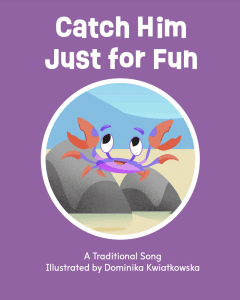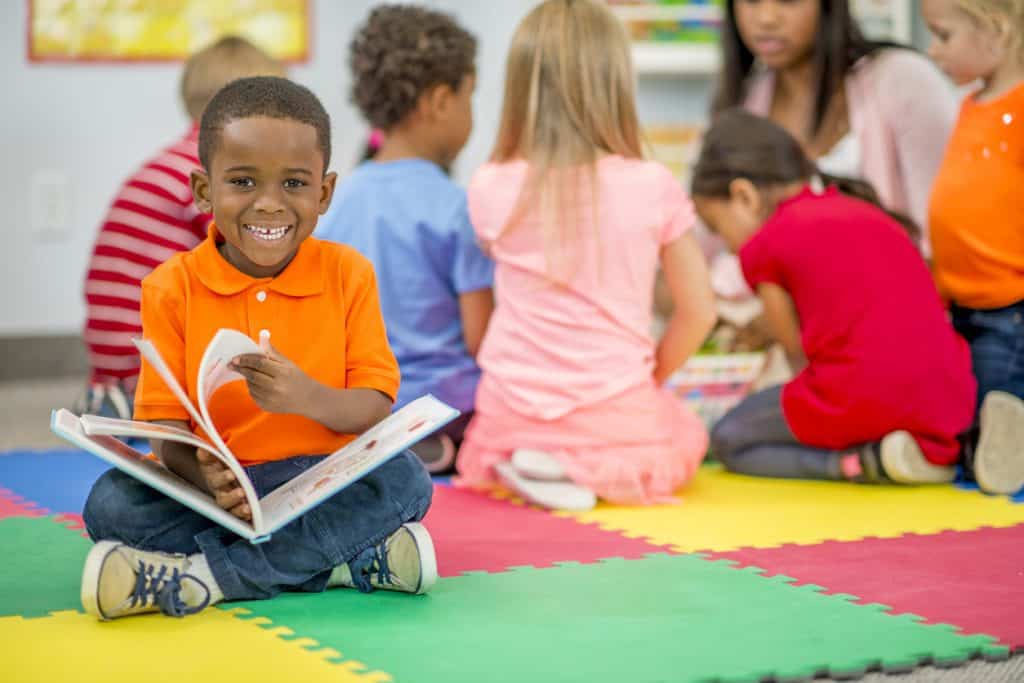Every April, the literary world comes alive with rhythm and rhyme as we celebrate National Poetry Month. For elementary school teachers, this month is an opportunity to practice early literacy skills and foster a love for poetry and language.
Curious how to teach poetry to early elementary students? Use this resource round-up to find engaging books and activities that will make National Poetry Month an enriching experience for your students. Plus, discover how learning about poetry can help young learners strengthen their reading and writing skills.
Why Celebrate National Poetry Month in Elementary School?
 Teaching poetry and rhyming to early elementary students can strengthen their phonological awareness skills. This will help them to recognize and manipulate the sounds within words, which is crucial for early reading and spelling development.
Teaching poetry and rhyming to early elementary students can strengthen their phonological awareness skills. This will help them to recognize and manipulate the sounds within words, which is crucial for early reading and spelling development.
Poetry also engages a student’s creativity, providing opportunities for self-expression and language exploration in a fun and approachable way. By teaching students about different poetic forms and rhyming patterns, they can expand their vocabulary and understanding of language structure. Plus, poetry activities can show students how fun reading can be, fostering a lifelong appreciation for the beauty and power of words.
Poetry and rhyming songs can be especially helpful for multilingual learners in elementary school. Not only do they expand vocabulary in a playful and memorable way, but they also provide a structured framework for understanding language patterns, sounds, and rhythms. Through repetition and patterns, multilingual students can more easily grasp phonics and develop their pronunciation skills in the languages they are learning.
6 of the Best Poetry and Rhyming Books for Elementary Students
Use these poetry and rhyming books to plan classroom read-alouds for National Poetry Month. Older elementary students may appreciate the poetry collection at the start of the list, while the rhyming books can help early elementary students practice their phonological awareness skills and grow their vocabulary.
Many of these rhyming books are based on traditional nursery rhymes, and you can encourage learners to sing or clap along as you read.
 1. Annie Can Whistle and Other Poems (Annie puede silbar y otros poemas): Written with a second grade reading level in mind, this poetry book encourages students to imagine what it would be like if they were a farmer, a circus clown, or even a venus fly trap?
1. Annie Can Whistle and Other Poems (Annie puede silbar y otros poemas): Written with a second grade reading level in mind, this poetry book encourages students to imagine what it would be like if they were a farmer, a circus clown, or even a venus fly trap?
2. Catch Him Just for Fun (Atrápalo solo por diversión): Two children have a fun day catching crabs in the stream.
3. Mother, Mother, I Am Ill (Mamá, mamá, estoy enfermo): When a boy is ill, his mother calls the doctor, the nurse, and an unusual guest.
4. Ox Kissing a Fox (El buey dándole un beso a la zorra): When two children visit down by the bay, their mother wonders if they have seen all kinds of fantastical sights—including an ox, an ax, and a T. Rex.
5. The Apple Tree (El árbol de manzanas): A girl enlists the help of her friend to reach two shiny apples up high in a tree.
6. Zig Zag (Zig Zag): This rhyming book follows a honeybee on its journey through a flower patch and back home to the hive.
Class Activities and Teacher Resources for National Poetry Month
During the month of April, start each day by reading aloud a poem to your students with a diverse selection of poetic forms and structures, as well as poets with diverse backgrounds and experiences. Encourage students to ask questions and share their interpretations of the poems. The Poetry Foundation is a great free resource for finding children’s poems to share in your lessons.
To practice writing skills, consider taking a poetry walk with your students. This outdoor poetry activity starts by walking around the school grounds and observing the elements surrounding you. After a few minutes of walking, have your students compose descriptive poems inspired by the nature, architecture, or everyday objects they see. If your students need help getting started, you could share poetry prompts like “the sounds I can hear when I close my eyes” or “what life might be like for an animal I can spot outdoors.”
After students read Annie Can Whistle and Other Poems they can use this Class Activities Guide for discussion prompts and lessons on imagery, rhythm, repetition, and figurative language. For early elementary students, these Rhyming Words and Figurative Language activity guides will be engaging lessons.
Plus, share this take-home resource with families so they can practice rhyming at home:

